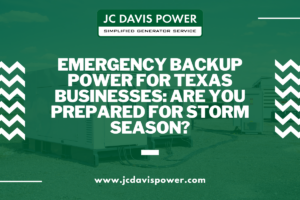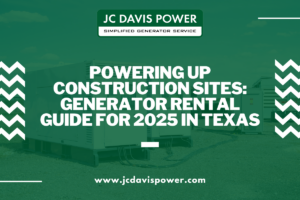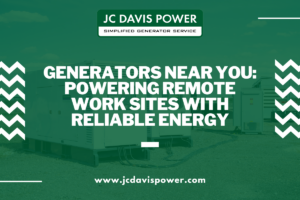Key Points
- Winter work has its lighting problems because days are shorter and the weather is bad.
- Good lighting helps keep workers safe, stops accidents, and keeps work moving.
- OSHA has rules for lighting on building sites that everyone must follow.
- LED and mobile light towers give bright, good lighting for winter work.
- Lights that can handle bad weather are needed to last in tough conditions.
- Smart lights can save energy and make sites safer.
- Planning lighting well, looking at the site, and finding cheap solutions are key for safety.
Winter work can be tricky, and lighting is super important for keeping workers safe and getting things done. With less daylight and bad weather, the right lights are more important than ever. Let’s see how good lighting can make winter building sites safer.
Why Winter Lighting is Tough
Winter Needs Different Lights
In the winter, there’s less daylight, which makes it harder to work. It gets hard to see as the sun goes down. Snow, fog, and early sunsets make it tough to see, which can make building sites dangerous without good lights.
Weather makes things even harder. Snow and ice can bounce light around and make it hard to see, while fog can spread light out and make it weak. So, it’s important to have lights that can handle changing weather.
Safety Numbers and Risks
Good lighting is key for safety on building sites. The Bureau of Labor Statistics says that building is one of the most dangerous jobs, and many accidents happen because it’s hard to see.
These numbers show that good lighting makes a big difference in safety. Bad lighting makes workers more likely to trip, fall, or have machine accidents. It also makes workers less productive and can make the work worse.
Lighting Rules and How to Follow Them
OSHA Rules for Lighting
OSHA has clear lighting rules for building sites. These aren’t just ideas, they’re laws that all sites must follow.
OSHA says that you need:
- 5 foot-candles for general areas
- 10 foot-candles for areas where work is happening
- 30 foot-candles for first aid areas and offices
Following these rules is important for the law and, most importantly, for the safety of everyone on the site.
Best Lighting Practices
Many companies go beyond OSHA’s rules and use even better lighting. These include:
- Using lights with better clarity so things look clearer.
- Adding special lights for detailed work.
- Check light levels often to make sure they’re always good.
These ideas can make sites much safer than just meeting the basic rules.
Great Lights for Winter Work
Using LED Lights
LED lights have changed how building sites are lit. They’re great for winter because:
- They save energy, which saves money.
- They give bright, clear light that helps cut through the dark.
- You can change the light from warm to cool for different tasks and times.
LEDs also turn on instantly in the cold, unlike some older lights.
Mobile Light Towers
For big winter jobs, mobile light towers are important. These strong lights can:
- Light up big areas, up to 7 acres.
- Be moved easily as work moves.
- Use different power, like solar and hybrid, to be eco-friendly.
Putting these towers in the right places makes sure big sites are well-lit.
Emergency Lights
Winter weather can be crazy, so backup lights are a must. Emergency lighting should include:
- Battery lights for quick use during power outages.
- Lights that run on generators for long power problems.
- Clear plans for what to do when the lights go out.
These steps make sure that workers are never left in the dark, even in bad weather.
Lights That Can Handle Winter
Tough Lights
Winter lights need to be strong. Key features include:
- Strong cases that can take hits.
- Weatherproof seals to keep out water and snow.
- Able to work in very cold conditions.
Buying tough, weather-resistant lights means they’ll last and work well.
Keeping Lights in Good Shape
Checking lights often is key for keeping them working in the winter. This includes:
- Looking for damage often.
- Cleaning the lenses to keep them bright.
- Replacing lights before they break.
Doing these things helps stop lighting problems that could make the site unsafe.
Smart Lighting Plans
Looking at the Site and Planning
Good lighting starts with looking at the site. This means:
- Mapping out where work is done and where risks are.
- Figuring out where to put lights for the best coverage.
- Thinking about how lighting needs might change as the project moves.
A well-planned lighting plan makes sure that every area is well-lit.
Cheap Lighting Options
While safety is the most important thing, budgets matter, too. Cheaper lighting ideas include:
- Buying energy-saving LED systems for long-term savings.
- Renting lights for short-term needs.
- Doing the math to see if buying the lights is worth it.
The right lighting can save money by stopping accidents and boosting work.
Smart Lights
Automated Systems
Smart lights make building site lighting better. These include:
- Motion sensors that turn lights on only when they’re needed.
- Timers to match the lights to work times.
- Remote control to manage lights easily.
These systems make sites safer and save energy.
Saving Energy
Managing energy well helps keep costs down and be eco-friendly. Ideas include:
- Using daylight sensors to adjust electric lights.
- Only lighting up areas where work is happening.
- Watching power is used to find ways to save.
Smart energy use makes sure that lights are always good but not wasteful.
Security Lights
Lights Around the Site
Good lighting is not just for work areas. Lighting around the site helps:
- Stop theft and damage.
- Make security cameras work better.
- Make it safer for security guards.
Good perimeter lighting is your first defense against after-hours problems.
Night Work Lights
For jobs that go on after dark, special lights are important:
- Special lights for work areas that don’t create glare.
- Lights that change brightness and color to stop workers from getting tired.
- Battery lights for flexibility.
Good night lights keep 24-hour work going safely and well.
Conclusion
Good lighting is key for safety in winter buildings. From following OSHA rules to using advanced smart lights, every part of lighting helps protect workers and boost work. By investing in good lights, managers can cut risks, improve work, and make a safer place for everyone.
Remember, in tough winter work, good lighting is not just about seeing better—it’s about working smarter and safer. Focus on your lighting plan, and see how it leads to a safer and better building site.
For more information about power solutions for your construction site, including lighting options, visit JC Davis Power.
FAQs
1. What are OSHA’s light rules for winter sites?
General areas: 5 foot-candles; work areas: 10 foot-candles; first aid: 30 foot-candles. Use LEDs for consistent light in the dark.
2. Best portable lights for cold weather?
Weather-proof LED towers and solar/hybrid lights work best in snow and ice, give good coverage (up to 7 acres), and save energy.
3. How to set up lights safely in snow and ice?
Secure lights on steady surfaces or poles to avoid snow buildup. Use safe cables and outlets to stop electrical problems.
4. What backup systems to use for power loss?
Battery lights + generators ensure lights stay on during storms or outages.
5. Are LEDs better than old lights for winter?
Yes: LEDs start instantly in cold weather, have adjustable colors, and save 50%+ energy vs. old bulbs.





